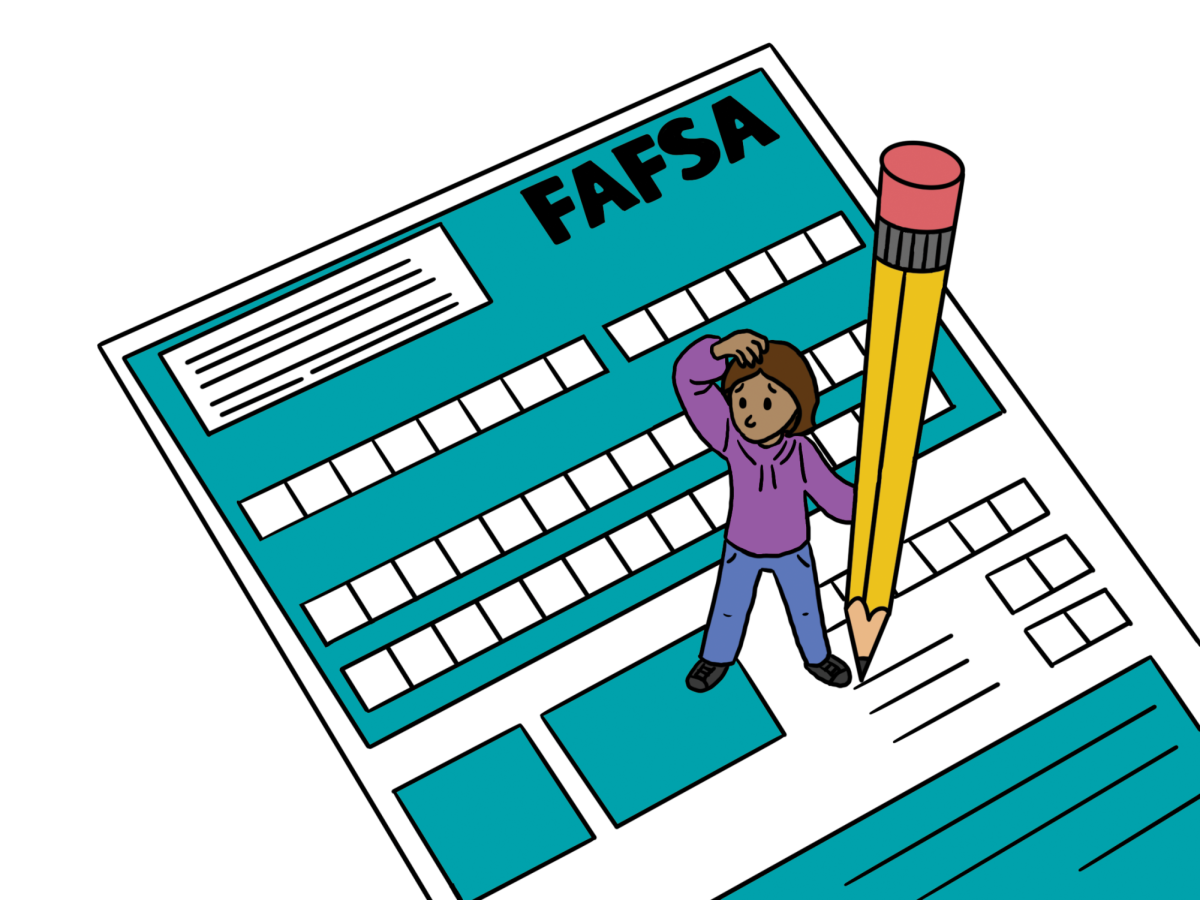As the school year comes to an end, Palo Alto High School seniors begin to receive acceptance letters to colleges and are anticipating what the future holds for them after high school. With the average annual cost of college tuition increasing every year, the amount of money needed to get a college education is a big factor when choosing a college. With the help of the Free Application for Federal Student Aid, Paly students are able to apply for financial aid, allowing them to attend college more affordably.
This year, the Department of Education released a supposedly streamlined version of the FAFSA, aiming to simplify the application process. However, the new form has been mired by technical difficulties and a late release, creating confusion for many college applicants and college students reapplying for aid.
The FAFSA is a form that is completed by future and current college students in the United States that determines eligibility to receive federal student aid. Every year, Paly students fill out the FAFSA form in hopes of being able to go to colleges in the U.S., where the average tuition at any 4-year institution is $19,806.
According to the FAFSA website, colleges assess various factors through the FAFSA application, including student’s income levels, assets, financial circumstances such as parental situation, if a student has rental property and how close their parents are to retiring. Considering all of these factors, colleges are able to establish a number called the Student Aid Index, which determines how much federal aid a student needs.
For Paly seniors like Ava Iribarren, the most challenging part of the process has been the consistent delays.
“For some of the scholarships I applied to, I do need FAFSA information,” Iribarren said. “It was definitely kind of hard that it [FAFSA] was so delayed and that we still haven’t got information back because you have to commit to a college before you know if you can get financial aid and college is expensive now.”
Iribarren is not alone in her struggle as, according to CNBC, over 3.1 million students have completed the FAFSA forms this year, with many still not receiving information back.
Stanford University junior Malia Perez said that reapplying for the FAFSA for her final year of college was a difficult process due to the new changes in the system which made the process very taxing and tedious.
“Their [application] had wording that had many double negatives and I know other people had issues of selecting something wrong and not being able to go back,” Perez said.
In previous years, the FAFSA applications were launched in early October, but for the 2024-2025 school year, the FAFSA application opened on Dec. 31, 2023, one day before the legislation’s deadline. The launch was accompanied by several bugs, making the FAFSA incredibly challenging to complete.
Usually, colleges receive students’ information shortly after their application is complete, often as early as October. However, due to the delayed launch and website glitches, colleges are experiencing significant delays in receiving this information.
“You typically know where you are going by May 1,” Paly college advisor Sandra Cernobori said. “But the FAFSA data has not yet been released to colleges.”
Many other problems have exacerbated FAFSA’s unreliability. In order to complete the form, both students and parents need a Social Security number to verify their identity. The system is unable to verify the identity of students whose parents are undocumented, on a visa or live abroad, forcing colleges to go through a manual process and contributing to the delay.
Zane Sabbagh, a graduate student at Stanford University, said that filling out the FAFSA was difficult due to the lack of guidance he had living outside of the United States.
“The account details to this day are awful,” Sabbagh said. “I also had no knowledge of taxes, so I had to figure that out, too.”
A notable change in this year’s FAFSA is the requirement that students and parents complete their sections of the form within a 45-day period. Failure to do so results in the expiration of the application, and students have to start from the beginning.
Because of all these issues, the most common reason students fail to submit the FAFSA is due to complexity. Factors such as nontraditional parental living situations, hesitance in disclosing tax information and difficulty securing income verification can pose significant challenges for individuals. This disproportionately affects first-generation students whose families lack familiarity with the form.
Because of this year’s FAFSA delays, more than 100 colleges are extending the traditional May 1st college decision deadline, with the Universities of California and California State Universities extending their deadline to May 15.
“It is a trickle-down effect,” Cernobori said. “Kids are struggling, colleges are super frustrated by their financial aid department because they haven’t been able to get this information and do anything and the admissions [are also frustrated] because they know that if they don’t get their financial aid awards to kids, the kids can’t decide where they are going, making this a big mess.”




